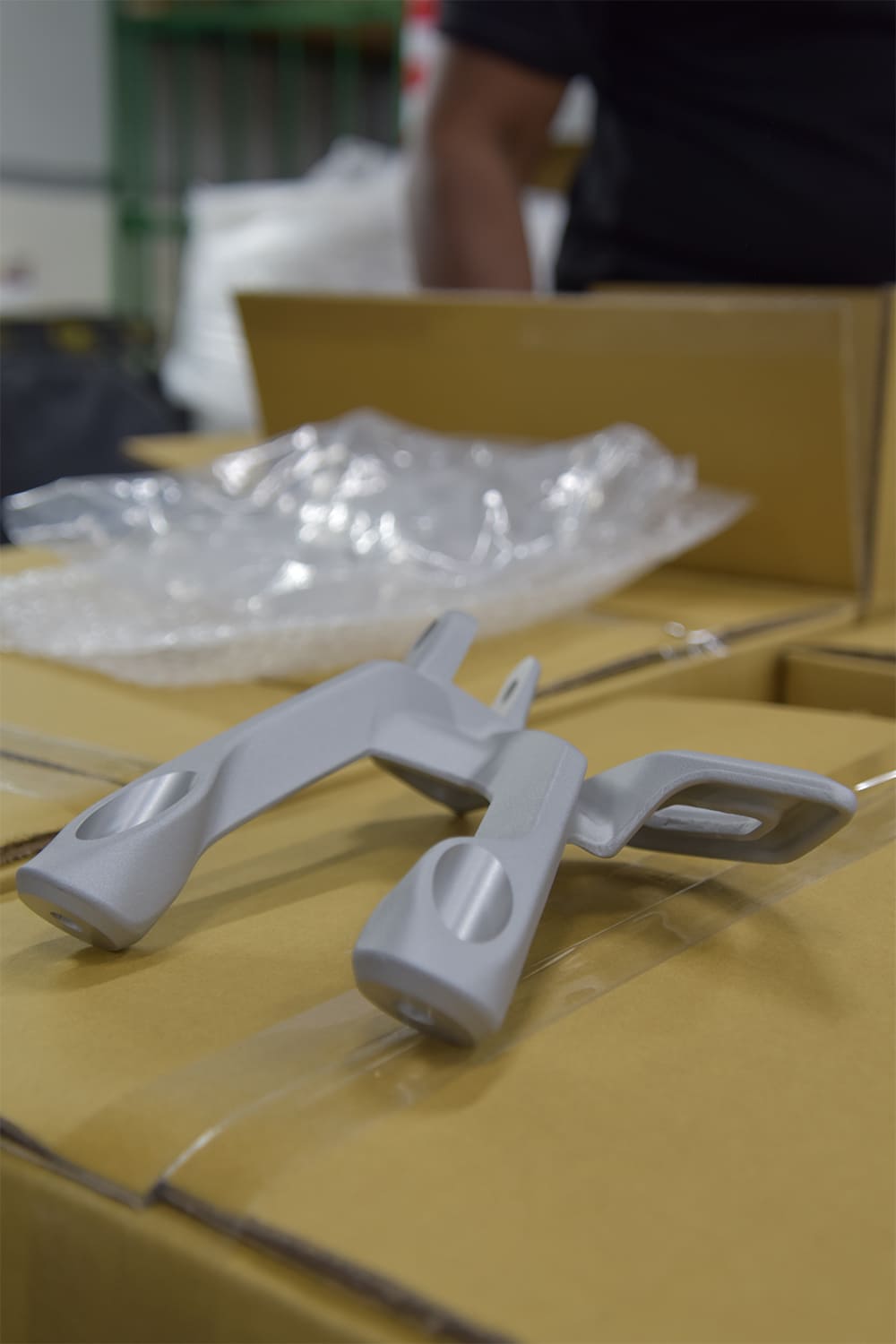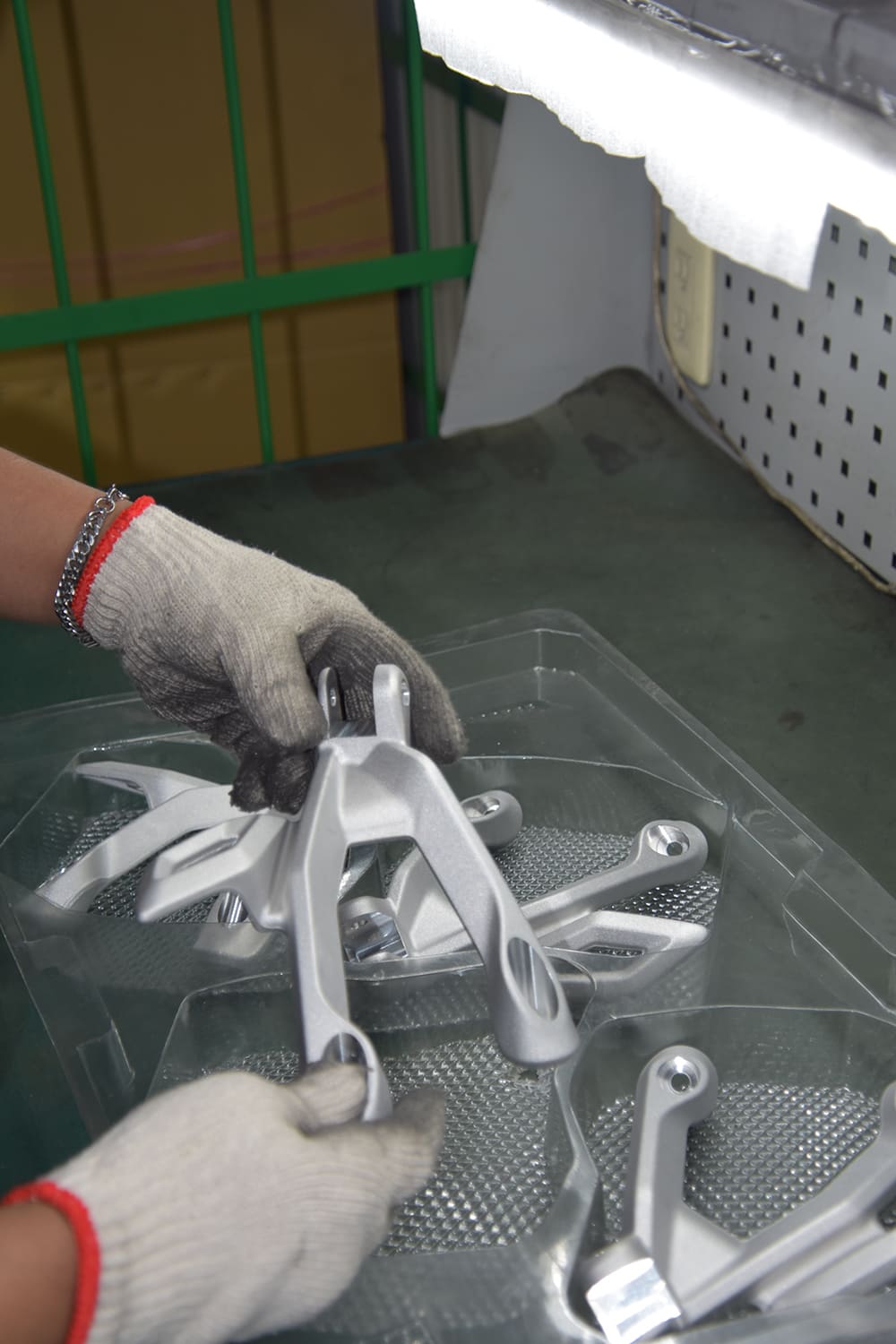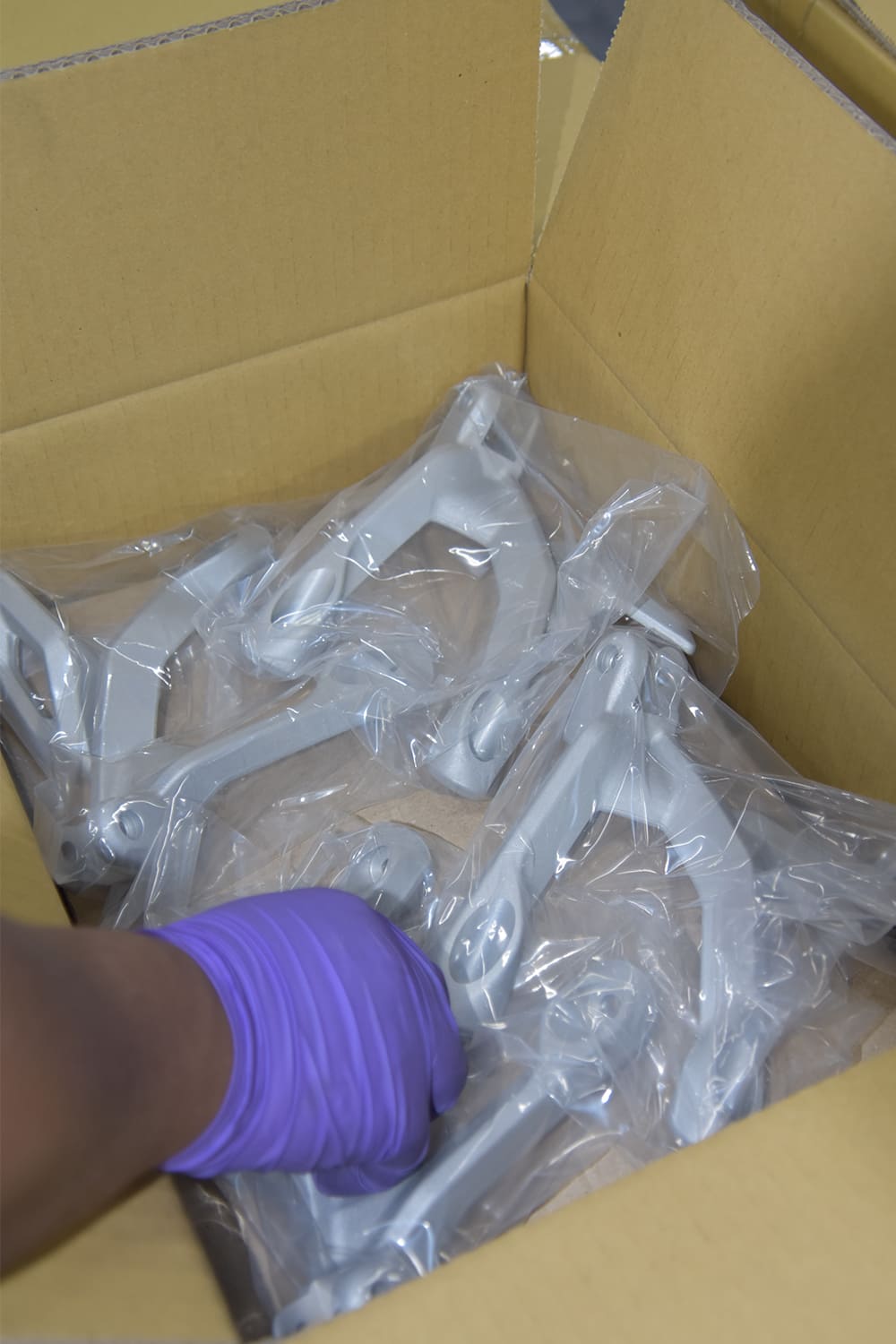1Cutting
The aluminum cutting and shearing process is an essential step in the production of aluminum products. Through precise cutting and trimming, it ensures that aluminum materials can be used for various applications, resulting in high-quality products that meet requirements.

2forging
The aluminum forging process produces components with improved mechanical properties, enhanced grain structure, and better performance compared to cast or machined parts. It is commonly used in industries such as aerospace, automotive, and construction to create high-strength and lightweight parts that can withstand demanding applications.
Hot forging and cold forging are variations of the forging process used for manufacturing metal components. Their main distinction lies in the temperature of the material during forging, which affects material ductility and the final product's properties. Here is an introduction to hot forging and cold forging:
Hot Forging: Hot forging is a forging process conducted at elevated temperatures. In hot forging, the metal material is heated above its recrystallization temperature, making it more malleable and easier to shape. This high-temperature forging process causes the material's grains to rearrange, improving mechanical properties, density, and fatigue resistance. Hot forging is typically employed for larger parts or components with complex geometries, such as aerospace engine parts and axles.
Cold Forging: Cold forging is a forging process conducted at or near room temperature. Unlike hot forging, cold forging doesn't require heating the material to its recrystallization temperature, thus not altering the material's grain structure. In cold forging, the metal material has lower plasticity, necessitating greater pressure to shape it. This process is often suitable for producing small parts like screws, nuts, and rivets, which typically don't require highly complex geometries.
In summary, hot forging and cold forging are methods of metal forging that differ in material temperature during the forging process and their suitability for specific applications. Hot forging is suitable for larger and intricate parts, while cold forging is suitable for small parts. Both contribute to the manufacture of high-quality metal components.
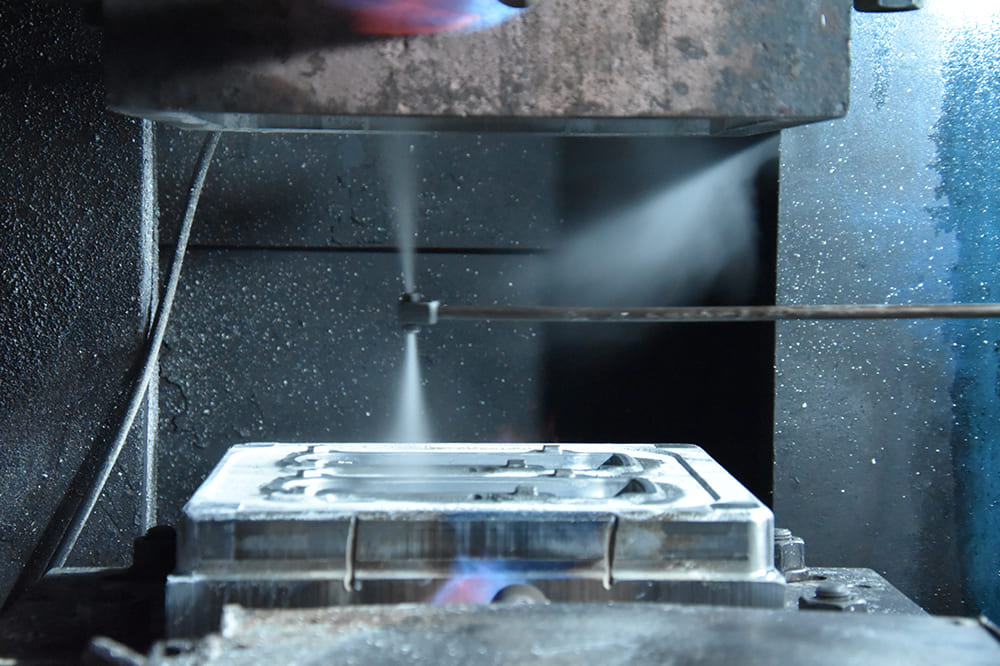
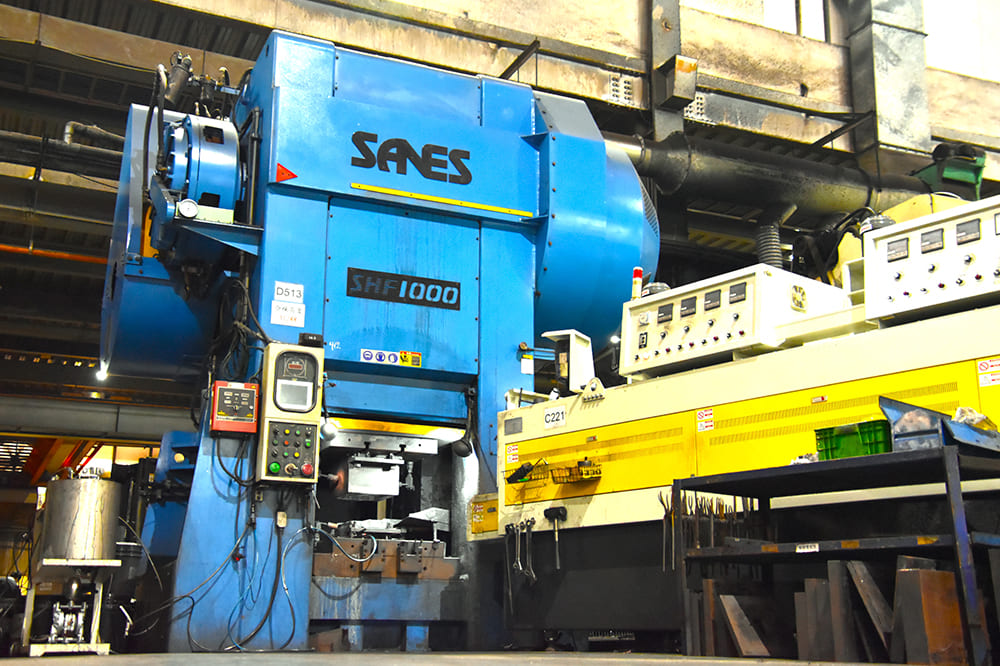
3Trimming
The aluminum alloy edge cutting process is a metal machining method primarily used for cutting and shaping aluminum alloy materials to create various products and components. Here's a brief introduction:
Material Selection: Firstly, suitable aluminum alloy materials are chosen, typically known for their higher strength-to-weight ratios, making them suitable for various applications such as aerospace, automotive, and construction.
Cutting Operation: Specialized cutting machines are employed to cut aluminum alloy sheets or coils into the desired shapes and sizes. These machines typically utilize saw blades or shears to precisely cut the material to meet specified requirements.
Shape Formation: Following aluminum alloy cutting, further shaping may be required, which can be achieved through processes like rolling, pressing, punching, etc., to shape the material to the desired specifications.
Surface Treatment: After edge cutting and shaping, aluminum alloy components may undergo additional surface treatments such as anodization, painting, or polishing to enhance their corrosion resistance and appearance.
Quality Control: Throughout the entire process, quality control and inspection are conducted to ensure that the final products meet design specifications and standards.
The primary advantages of the aluminum alloy edge cutting process include its lightweight nature, excellent corrosion resistance, and outstanding thermal conductivity, making it widely used in numerous industrial and consumer product applications.
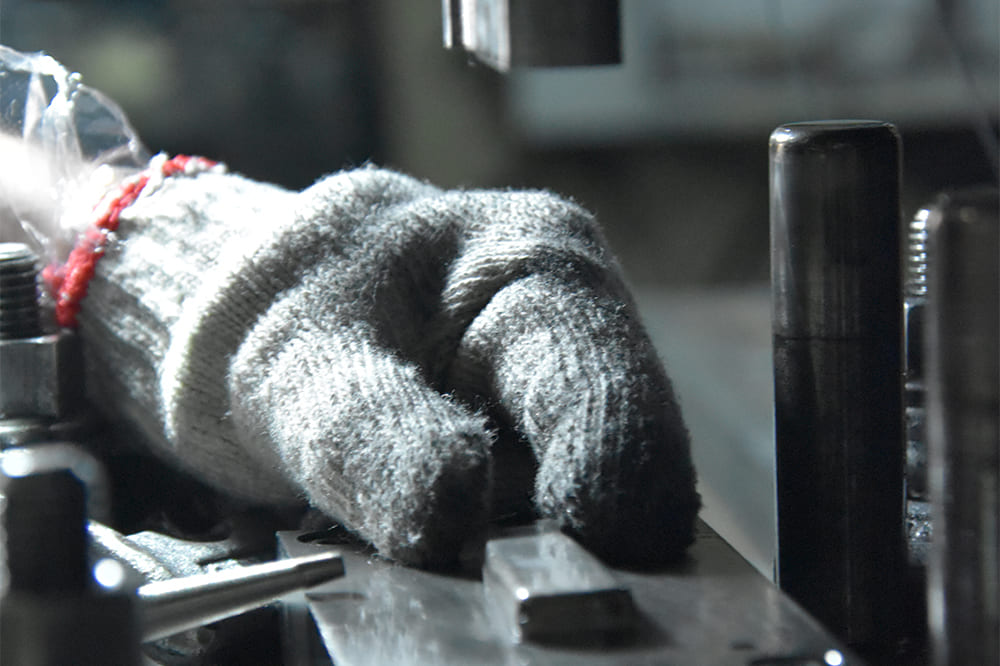
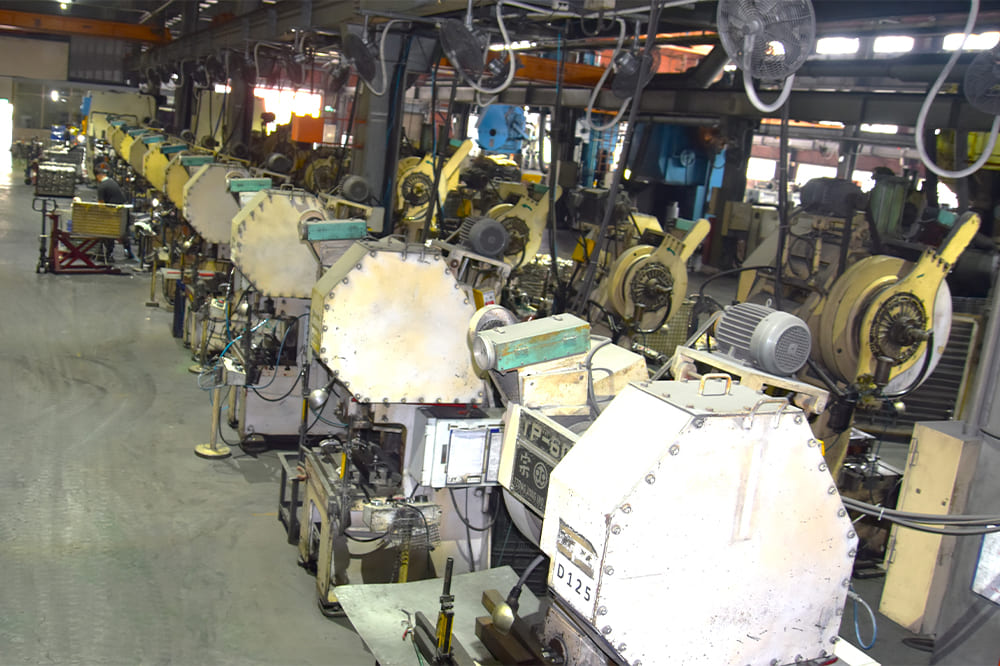
4Heat Treatment
Heat Treatment is a metallurgical process used to alter the structure and properties of metal materials. By subjecting metal materials to heating and controlled cooling, their hardness, strength, toughness, corrosion resistance, and other characteristics can be adjusted. Heat treatment processes are commonly applied in the metal industry to enhance material performance and usability. Here are several common heat treatment processes:
Annealing: Annealing involves heating the material to a high temperature and then gradually cooling it. This process eliminates internal stresses, enhances material ductility, and improves crystal structure. Full annealing renders the material softer, while spheroidizing annealing is used to improve its machinability.
Normalizing: Normalizing entails heating the material to a moderate temperature and then air-cooling it. This process enhances the material's strength and hardness while maintaining a certain level of toughness. Normalizing is often applied to cast materials and steels.
Quenching: Quenching involves rapidly cooling the material from a high temperature to room temperature or a low temperature. This causes a change in the material's structure, resulting in hardening. Quenched materials usually exhibit high hardness but might be brittle, requiring further tempering to enhance toughness.
Tempering: Tempering involves reheating the quenched material to a medium temperature and then appropriately cooling it. This process reduces the brittleness caused by quenching while maintaining a certain level of hardness, achieving a balanced combination of hardness and toughness.
Solutionizing: Applied to alloy materials, solutionizing dissolves solute elements in a solid solution, enhancing the material's ductility and machinability. Subsequent quenching or aging can further adjust the alloy's properties.
Aging: Aging includes heating the material to a moderate temperature, holding it at that temperature for a specific period, and then cooling it. This allows solute elements to recombine, generating additional hardening effects while maintaining a certain level of toughness.
In conclusion, heat treatment is a vital metallurgical process that adjusts the properties of metal materials by controlling heating and cooling processes. These various heat treatment methods enable materials to meet different purposes and requirements, playing a crucial role in engineering and manufacturing.
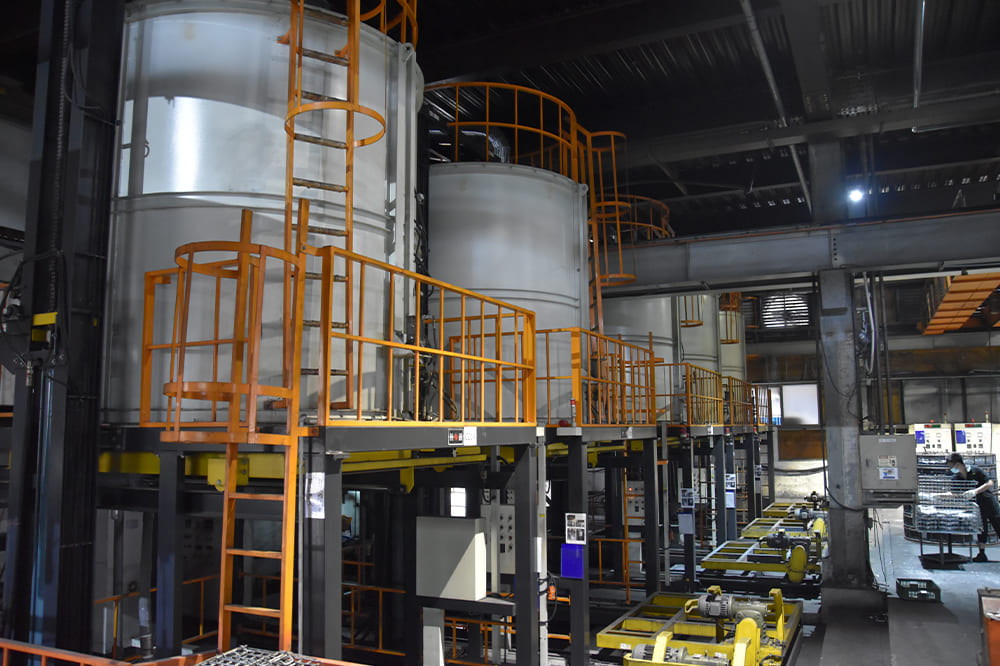
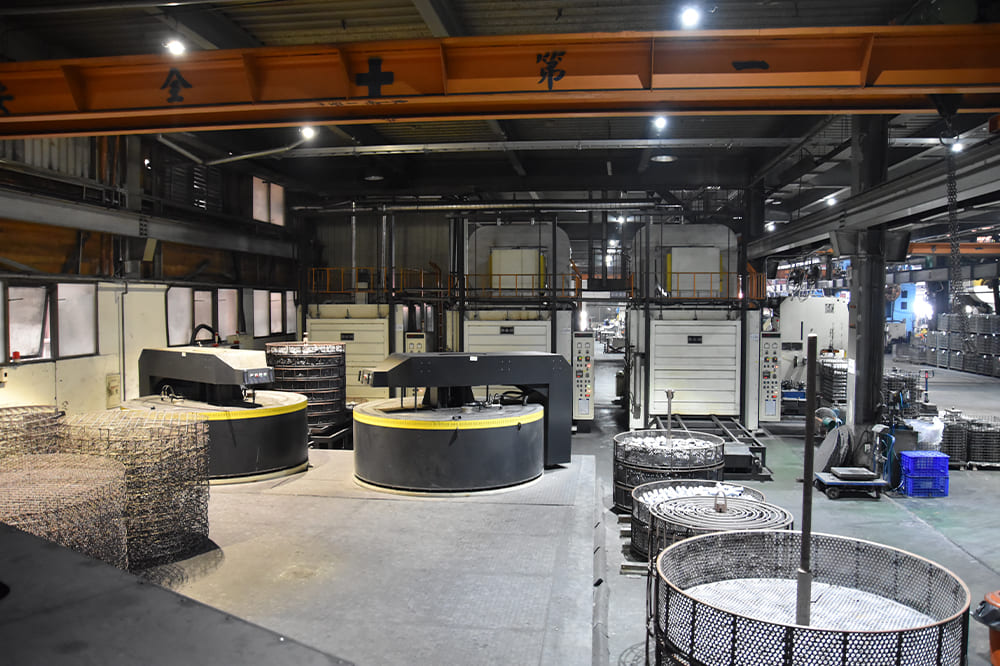
5Tumbling
The Aluminum Alloy Vibratory Process is a specialized surface treatment method used for processing aluminum alloy materials. Its purpose is to enhance surface quality, improve aesthetics, increase adhesion, and potentially modify the material's physical properties. This process is commonly applied during the manufacturing of aluminum alloy parts to achieve specific functionalities and effects. Here's a brief introduction to the Aluminum Alloy Vibratory Process:
Process Principle: The Aluminum Alloy Vibratory Process operates on the principle of vibratory machinery. Aluminum alloy parts are placed within a vibratory machine, where vibrational forces are applied. These vibrations cause the parts to interact with specific abrasives or media, resulting in friction and collisions that induce subtle changes on the material's surface.
Surface Treatment Effects: The Aluminum Alloy Vibratory Process can enhance the gloss, smoothness, and uniformity of the material's surface. Through vibrational friction, it can eliminate surface oxidation, gas pores, and minor irregularities, leading to a more consistent material surface. This contributes to improved visual aesthetics and surface quality.
Enhanced Adhesion: This process can also increase the surface roughness of aluminum alloy materials, which aids in better adhesion for subsequent coatings, adhesives, or other applied substances. Consequently, overall durability and performance of the parts are enhanced.
Adjustment of Physical Properties: Due to the potential for the vibratory process to induce microstructural changes, it can sometimes lead to minor adjustments in physical properties such as hardness, toughness, and fatigue performance of aluminum alloys.
Application Fields: The Aluminum Alloy Vibratory Process finds wide application in sectors such as automotive components, aerospace parts, household appliances, and other aluminum alloy products where enhancing surface quality and adhesion is crucial.
In conclusion, the Aluminum Alloy Vibratory Process is a unique treatment method that employs vibratory machinery to enhance surface quality, aesthetics, and adhesion of aluminum alloy materials. Its significance in elevating product quality, performance, and appearance makes it valuable across various industrial domains.
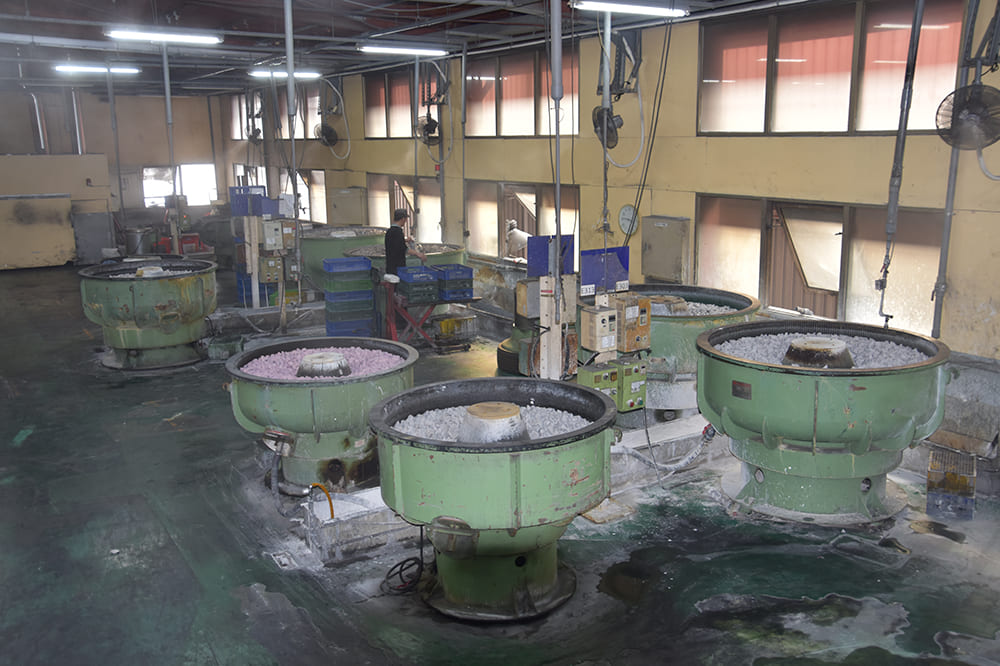
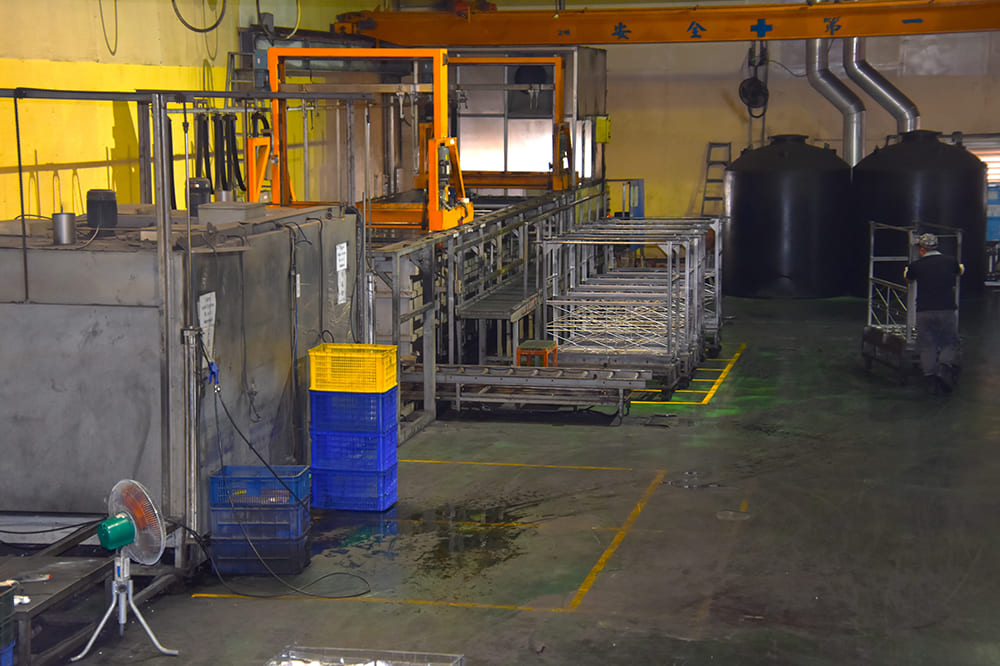
6Grinding
The Aluminum Alloy Grinding Process is a surface treatment method used for processing aluminum alloy materials. It is typically employed to improve surface flatness, roughness, glossiness, and achieve the desired levels of precision and visual quality. This process finds applications in various aluminum alloy parts and products, including vehicle components, industrial equipment, consumer electronics, and more. Here's a brief introduction to the Aluminum Alloy Grinding Process:
Grinding Tools: The Aluminum Alloy Grinding Process utilizes abrasive tools such as grinding wheels, sanding wheels, or abrasive belts for surface treatment. The choice of abrasive tool depends on the desired grinding effects, material characteristics, and processing requirements.
Surface Treatment Effects: The process can eliminate surface irregularities, oxidation layers, and other irregularities on aluminum alloy materials. By gradually removing material from the surface, a smoother and more polished surface can be achieved, enhancing the material's visual quality.
Precision and Dimensional Control: Grinding allows for high levels of dimensional control and precision, which is especially important for parts requiring tight tolerances and dimensional consistency. This precision makes grinding a crucial process in manufacturing precision components.
Deburring and Edge Treatment: The Aluminum Alloy Grinding Process can also eliminate burrs and unevenness at the edges of materials, resulting in smoother edges that do not pose a risk to operators.
Glossiness and Surface Quality: By adjusting grinding parameters, the glossiness and quality of the material's surface can be controlled. From rough surfaces to mirror-like finishes, grinding can achieve various surface treatment effects to meet different requirements.
In conclusion, the Aluminum Alloy Grinding Process is an important surface treatment method that enhances surface flatness, roughness, dimensional precision, and visual quality of aluminum alloy materials. Widely applied across industries, this process contributes to the production of high-quality, precision aluminum alloy parts and products.
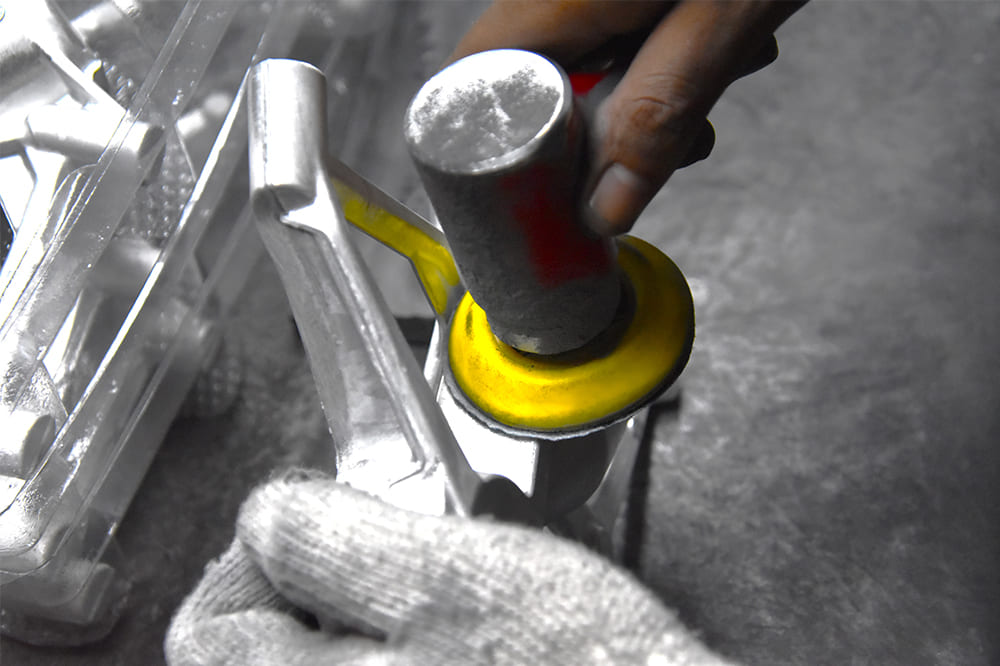
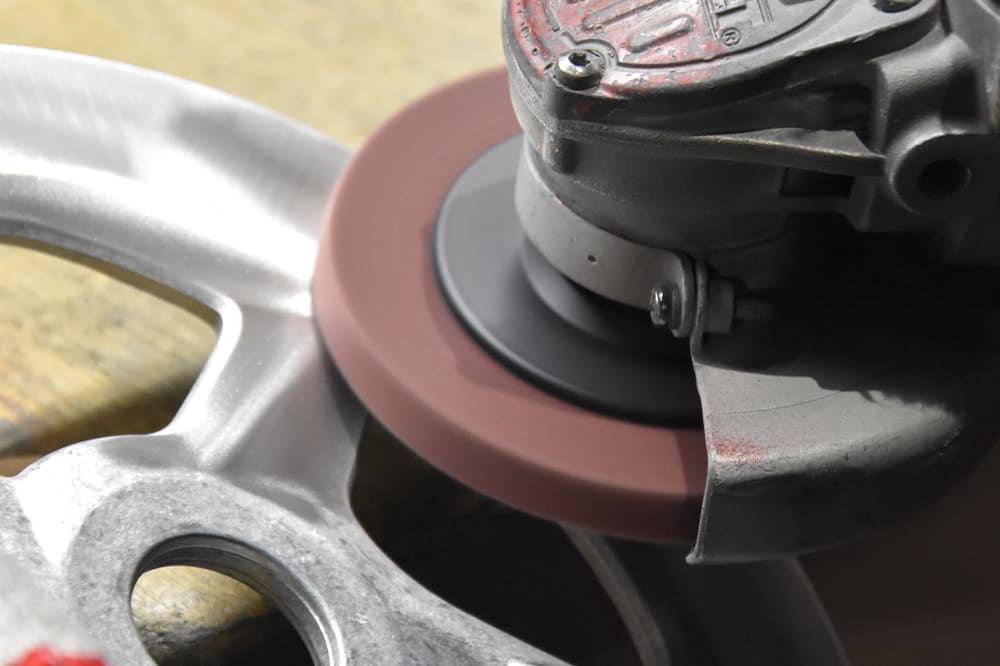
7Sandblasting
The Aluminum Alloy Sandblasting Process is a surface treatment method used for aluminum alloy materials. It involves propelling abrasive particles against the surface of the aluminum alloy at high velocity to achieve various effects, such as cleaning, roughening, smoothing, or adding texture. This process is widely used in industries like automotive, aerospace, electronics, and more. Here's a brief overview of the Aluminum Alloy Sandblasting Process:
Abrasive Selection: Abrasive materials, such as sand, glass beads, aluminum oxide, or other specialized media, are chosen based on the desired surface effect and the material being treated. The type, size, and hardness of the abrasive particles influence the outcome.
Surface Treatment Effects: The sandblasting process imparts different effects on the aluminum alloy surface depending on factors like the type of abrasive used, pressure, and duration. It can remove contaminants, oxidation layers, and unwanted coatings from the surface, revealing the clean metal beneath.
Roughening or Smoothing: Sandblasting can roughen the surface of the aluminum alloy, creating a textured finish that enhances adhesion for coatings or paints. Conversely, it can also smooth the surface by removing unevenness or sharp edges.
Decorative Texture: Sandblasting can be utilized to create decorative textures on the surface of aluminum alloy products. This is often seen in artistic and design applications, where the texture adds visual interest.
Preparation for Coating: Sandblasting is commonly used as a surface preparation method before applying coatings, paints, or other finishes. The roughened surface promotes better adhesion of the coating material.
Controlled Parameters: The process parameters, including pressure, nozzle distance, and angle, can be controlled to achieve different effects on the aluminum alloy surface. Careful adjustment ensures the desired results without damaging the material.
In conclusion, the Aluminum Alloy Sandblasting Process is a versatile surface treatment technique that utilizes abrasive particles to modify the appearance and characteristics of aluminum alloy materials. By controlling parameters and selecting appropriate abrasives, manufacturers can achieve various surface finishes and prepare aluminum alloy surfaces for further processing or applications.

8Packaging
The 100% Inspection Packaging Process is an industrial procedure employed in the manufacturing and packaging of products, aiming to ensure that every produced item meets predetermined quality standards and specifications. This process is commonly applied to products with stringent requirements, such as electronic components, medical devices, aerospace parts, etc., to guarantee consistent product quality delivered to customers. Here is a concise introduction to the 100% Inspection Packaging Process:
Manufacturing Process Monitoring: In the 100% Inspection Packaging Process, every critical step of the manufacturing process is monitored and verified. This includes inspecting raw materials, various stages of processing, and the final assembly process.
Automated Detection and Measurement: Automated equipment and inspection tools are employed to examine various characteristics of products, such as dimensions, appearance, functionality, etc. These inspection tools ensure that the products conform to design and specification requirements.
Defective Item Screening: If any non-conforming products are identified during the inspection process, they are marked as defective and undergo appropriate handling. This can involve repairs, reprocessing, or rejection to prevent substandard products from entering the final packaging stage.
Data Tracing and Recording: The 100% Inspection Packaging Process necessitates comprehensive recording of inspection results and associated data for each product. This data is crucial for subsequent quality control and improvement efforts.
Individual Packaging and Labeling: Products that pass inspection and are deemed compliant are individually packaged. Additionally, they are often marked, labeled, and assigned product identification codes.
Ensuring Consistency: The process ensures that every manufactured product adheres to the same high-quality standards, ensuring that every product received by customers is of approved quality.
In conclusion, the 100% Inspection Packaging Process is a vital approach for ensuring product quality. By monitoring, inspecting, and guaranteeing product consistency, this process assures that products meet the expected quality standards upon delivery to customers.
